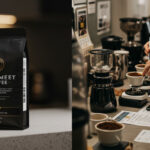
The Perfect Iced Coffee: Techniques for a Smooth and Refreshing Cold Brew

Table of Contents
ToggleIced coffee is more than just a way to cool down—it’s a delicious and refreshing experience when brewed correctly. But not all iced coffee is the same. Whether you prefer cold brew, Japanese iced coffee, or classic iced coffee, the right method can enhance the flavor, smoothness, and aroma of your drink.
In this guide, we’ll explore the best techniques for making smooth, flavorful iced coffee at home, without bitterness or watered-down taste.
1. What’s the Difference Between Iced Coffee and Cold Brew?
While many people use the terms interchangeably, iced coffee and cold brew are NOT the same. The difference comes down to brewing time, temperature, and taste.
| Feature | Iced Coffee (Hot Brewed, Then Cooled) | Cold Brew (Slow Extraction in Cold Water) |
|---|---|---|
| Brewing Method | Hot coffee brewed and poured over ice | Coffee steeped in cold water for 12-24 hours |
| Taste | Bright, aromatic, slightly acidic | Smooth, mellow, naturally sweet |
| Time Required | Fast (5-10 minutes) | Slow (12-24 hours) |
| Caffeine Level | Regular caffeine content | Higher caffeine content |
| Best For | Those who enjoy a refreshing, bold taste | People who prefer a smooth, low-acid drink |
👉 Iced coffee is quick and keeps the bright, bold flavors of coffee.
👉 Cold brew is smoother, less acidic, and naturally sweet.
2. The Best Techniques for Smooth, Flavorful Iced Coffee
A. Classic Iced Coffee (Hot Brewed, Then Cooled)
🔹 Best for: Those who want a quick and refreshing coffee
🔹 Time: 5-10 minutes
🔹 Grind Size: Medium (like sea salt)
How to Make It:
- Brew hot coffee (use a drip machine, pour-over, or French press).
- Let it cool slightly to prevent excessive dilution.
- Fill a glass with ice and pour the coffee over it.
- Add milk, cream, or sweetener (optional).
☕ Flavor Profile:
- Bright, bold, slightly acidic
- Can taste slightly bitter if cooled improperly
✅ Tips for Better Iced Coffee:
- Use twice the amount of coffee grounds (1:8 ratio instead of 1:15) to avoid dilution.
- Brew at a lower temperature to reduce bitterness.
- Use coffee ice cubes (freeze brewed coffee) to prevent a watered-down taste.
🚫 Downsides:
- Can become bitter if over-extracted.
- Ice melts quickly, diluting the coffee.
B. Japanese Iced Coffee (Flash Brew Method)
🔹 Best for: Coffee lovers who enjoy complex, aromatic flavors with a refreshing chill
🔹 Time: 5 minutes
🔹 Grind Size: Medium-fine (like sand)
How to Make It:
- Use a pour-over setup (V60 or Chemex).
- Fill the coffee carafe with ice cubes.
- Brew hot coffee directly over the ice (use a 1:10 ratio of coffee to water).
- Swirl and serve immediately.
☕ Flavor Profile:
- Bright, floral, and crisp
- Less bitterness than regular iced coffee
- Preserves delicate flavors of specialty coffee
✅ Why It’s Great:
✔ Locks in fresh aromas and complexity
✔ No long waiting time
✔ Less bitterness than standard iced coffee
🚫 Downsides:
- Requires a pour-over dripper and precise technique
C. Cold Brew Coffee (Slow-Steeped Perfection)
🔹 Best for: Those who love smooth, low-acid, naturally sweet coffee
🔹 Time: 12-24 hours
🔹 Grind Size: Coarse (like breadcrumbs)
How to Make It:
- Combine coffee and cold water (1:4 ratio) in a jar or cold brew maker.
- Let it steep in the fridge for 12-24 hours.
- Strain the coffee using a fine mesh or paper filter.
- Dilute with water or milk (1:1) and serve over ice.
☕ Flavor Profile:
- Silky smooth, slightly sweet, and chocolatey
- No bitterness, low acidity
✅ Why It’s Great:
✔ Naturally sweet without sugar
✔ Can be stored for up to 2 weeks
✔ Higher caffeine concentration for an extra kick
🚫 Downsides:
- Takes a long time to brew
- Requires coarse grinding and filtering
3. The Best Beans for Iced Coffee & Cold Brew
Not all coffee beans are ideal for iced coffee. Here’s what to look for:
✅ Light & Medium Roasts – Retain more bright, fruity, and floral notes.
✅ Single-Origin Coffees – Ethiopian, Kenyan, and Colombian beans shine in iced coffee.
✅ Chocolate & Nutty Notes – Brazilian and Guatemalan coffees work great in cold brew.
🚫 Avoid Dark Roasts – They can taste burnt and bitter when chilled.
4. Adding Milk & Sweeteners: How to Elevate Your Iced Coffee
While black iced coffee is delicious, adding milk, syrups, or flavors can make it even better:
🥛 Milk Options:
- Whole milk – Creamy and rich
- Oat milk – Naturally sweet, perfect for cold brew
- Almond milk – Light, nutty flavor
- Coconut milk – Adds a tropical twist
🍯 Sweetener Choices:
- Simple syrup (sugar + water heated together) – Dissolves easily
- Honey or maple syrup – Natural and flavorful
- Flavored syrups (vanilla, caramel, hazelnut) – Café-style drinks at home
❄ Bonus Tip: Shake your iced coffee with milk and ice for a creamy, frothy texture (like a Starbucks shaken espresso!).
5. The Best Ice for Iced Coffee: Does It Matter?
Yes! The type of ice you use affects the taste and texture of your iced coffee.
🧊 Best Ice Choices:
✅ Coffee Ice Cubes – Made by freezing leftover coffee to prevent dilution.
✅ Large Ice Cubes – Melt slowly and keep coffee cold longer.
✅ Crushed Ice – Ideal for frappés or blended iced coffee.
🚫 Worst Ice Choices:
- Small, thin ice cubes – Melt too fast and dilute coffee.
6. Quick Comparison: Which Iced Coffee Method Is Best for You?
| Feature | Classic Iced Coffee | Japanese Iced Coffee | Cold Brew Coffee |
|---|---|---|---|
| Brewing Time | 5-10 minutes | 5 minutes | 12-24 hours |
| Flavor | Bold, slightly acidic | Bright, floral, aromatic | Smooth, sweet, low-acid |
| Best Beans | Medium-dark roasts | Light roasts | Medium roasts |
| Strength | Moderate | Moderate | High (can be diluted) |
| Best for | Quick refreshment | Specialty coffee lovers | Smooth, mellow cold coffee |
👉 Choose Classic Iced Coffee for a fast, bold brew.
👉 Go for Japanese Iced Coffee if you love bright, complex flavors.
👉 Pick Cold Brew if you want smooth, low-acid coffee.
Conclusion: Mastering the Perfect Iced Coffee
The best iced coffee depends on your taste, time, and brewing style.
- For a quick, bold drink, go with classic iced coffee.
- For a fresh, complex experience, try Japanese iced coffee.
- For the smoothest, low-acid option, cold brew is the best choice.
Experiment with different beans, brewing times, and milk options to create your perfect refreshing iced coffee! ☕❄✨
Frequently Asked Questions (FAQ)
1. What’s the difference between iced coffee and cold brew?
Iced coffee is made by brewing hot coffee and cooling it down with ice. Cold brew, on the other hand, is made by steeping coarse-ground coffee in cold water for 12 to 24 hours. Cold brew tends to be smoother, less acidic, and naturally sweeter.
👉 Learn more on Cold Brew – Wikipedia
2. How can I prevent iced coffee from tasting watery?
- Use coffee ice cubes: Freeze brewed coffee in ice cube trays and use them instead of regular ice.
- Brew it stronger: Make a more concentrated coffee using a higher coffee-to-water ratio (e.g., 1:8) so the flavor holds up when diluted with ice or milk.
3. What’s the ideal coffee-to-water ratio for cold brew?
A common ratio is 1:8 — one part coffee to eight parts water. For a stronger concentrate, some prefer 1:6. You can dilute the final brew with water or milk to taste.
4. How long should I steep cold brew coffee?
Cold brew typically needs 12 to 24 hours of steeping. The longer the steep, the stronger the flavor. Most people find 16–18 hours to be the sweet spot for balance.
5. Can I use any coffee beans for cold brew?
Yes. Any beans can be used, but medium to dark roasts are preferred by many for their bold, smooth flavor in cold brew. Lighter roasts can taste more acidic and fruity.
6. What grind size should I use for cold brew?
Use a coarse grind, similar to raw sugar or sea salt. This allows for better filtration and avoids over-extraction, which can cause bitterness.
7. How long does cold brew last in the fridge?
Properly stored in an airtight container, cold brew can last up to 7 days in the refrigerator. It’s best consumed within the first few days for optimal flavor.
8. Does cold brew have more caffeine than hot coffee?
It can — depending on the brew strength and how it’s served. Cold brew concentrate has more caffeine per ounce, but once diluted, it may contain a similar or slightly higher caffeine content than regular coffee.
9. Can I heat cold brew to drink it hot?
Yes. You can mix cold brew concentrate with hot water for a smooth hot coffee with less acidity. Just don’t boil it — heat gently to preserve its flavor.
10. What are the benefits of cold brew over traditional coffee?
Cold brew is:
- Less acidic, making it gentler on the stomach
- Naturally sweeter, often requiring less sugar or milk
- Smoother in flavor, with a mellow, rich body
is an editor at Coffee With Finance and a true coffee enthusiast. He explores roasts, flavors, origins, and brewing methods, sharing stories that captivate both beginners and experts. Petter believes great coffee sparks meaningful moments—and that includes simple, jargon-free talks about personal finance. His content blends aroma, flavor, and insight, making each coffee break an inspiring and enriching experience.

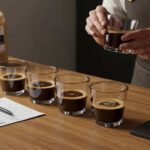









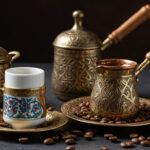

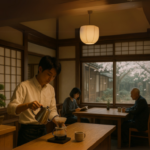

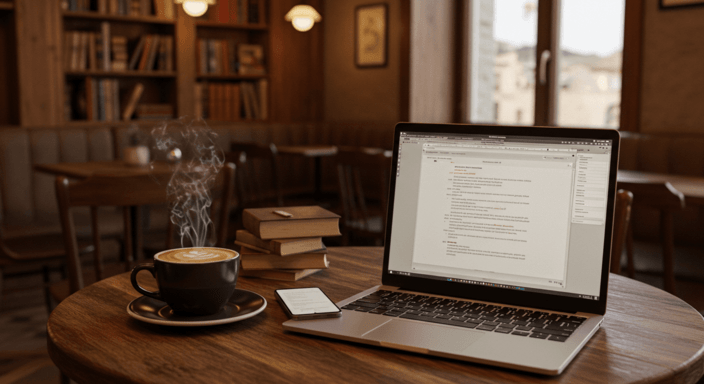
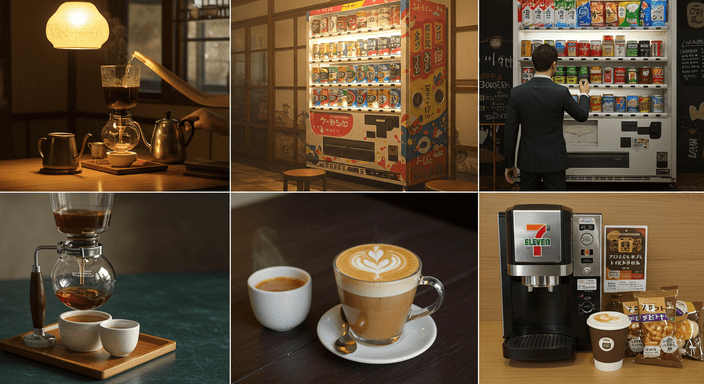
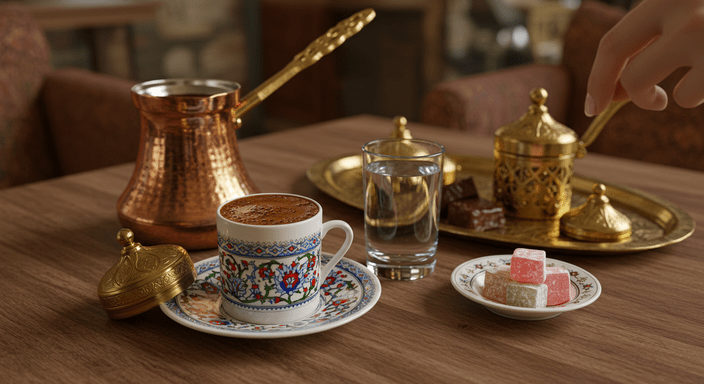









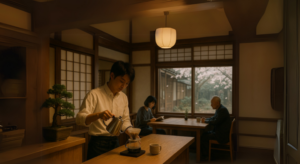
Post Comment